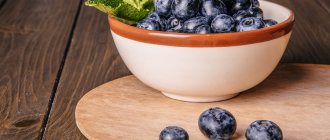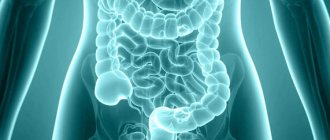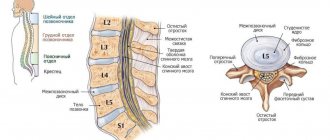Studies have shown that the smell of fresh baked goods has an active effect on the human brain, causing activation of the digestive system and a strong desire to eat something at that very second. It is no secret that many marketers have long been using the synthesized aroma of freshly baked bread in grocery stores and cafes to increase the purchasing power of visitors. But eating this undoubtedly delicious product can cause a feeling of heaviness and fullness in the stomach. And there are a number of well-founded scientific explanations for this phenomenon.
Peas, beans and similar products cause bloating and increased gas formation in everyone
There are some products that, even in small quantities, can cause gas problems. A classic example is legumes, especially “heavy” ones such as lentils and beans. They contain substances that interfere with digestive enzymes. As a result, the food eaten is broken down later than usual, and bacteria have a chance to utilize some of this food to form gases.
But people's reactions to such foods vary greatly due to genetics. It provides someone’s body with stronger enzymes and in larger quantities, which help digest food faster. Other people, from birth, have an intestinal microflora that can utilize the undigested portion of food without the accumulation of unpleasant substances that cause unpleasant symptoms. For example, a person with a deficiency of the lactase enzyme for digesting milk sugar may have good microflora that can partially utilize it without causing symptoms.
Let's fix the chair. Apples, peas and walnuts will help get rid of constipation Read more
Galactooligosaccharide-dependent flatulence and bloating
Gas-associated symptoms - bloating, flatulence and flatulence - occur in patients with various pathological conditions. Flatulence, bloating and abdominal distension are symptoms that are difficult to describe and have a common understanding. Therefore, it is important to identify and have a common understanding on the part of the doctor and the patient of these symptoms. Flatulence refers to the actual accumulation of gases in the intestines, which is manifested by bloating. Abdominal bloating is characterized by an objective increase in its volume, and flatulence is interpreted as voluntary and involuntary abundant release of large amounts of intestinal gases [1].
Population-based studies show a wide range in the incidence of bloating: from 6% to 31% of respondents [2–4]. At the same time, one of the most interesting results of clinical observations was that, despite the obvious connection between flatulence and bloating, these are two symptoms that occur separately in frequency. For example, in a study by L. Chang et al. 24% of respondents reported only flatulence, and 76% of patients had both flatulence and bloating. In patients with irritable bowel syndrome (IBS), flatulence and bloating are more common in women and in clinical cases of IBS with constipation [5].
The pathophysiological processes underlying gas-associated symptoms are not well understood to date. It is known that human intestinal gas consists of several components: nitrogen (N2); oxygen (O2); carbon dioxide (CO2), hydrogen (H2) and methane (CH4). Nitrogen and oxygen are part of intestinal gas when air is swallowed. CO2, H2, CH4 are formed as a result of bacterial fermentation of non-absorbable dietary substrates, mainly carbohydrates. Mechanisms that are being actively studied for gas-associated symptoms include the interaction of liquid media and gases, disorders of the sensory and motor functions of the gastrointestinal tract (GIT), features of gas clearance in the proximal colon, psychological factors, increased lumbar lordosis, weakness of the abdominal wall muscles, excess bacterial growth, changes in intestinal microflora, intolerance to a number of nutrients [6–16].
Modern pathophysiological scientific data on flatulence and bloating distinguish primary and secondary forms of gas-associated symptoms. Secondary forms of flatulence and bloating are secondary symptoms of the disease, the impact on which determines the effectiveness of therapy. Primary flatulence and bloating are an independent form of functional gastrointestinal disorders and often accompany other functional gastrointestinal disorders - IBS, functional dyspepsia and others. According to a study conducted by AK Tuteja et al., abdominal bloating was detected in 23–35% of patients, depending on the form of IBS, and in 42% of patients with unexamined dyspepsia [17].
Functional flatulence (FM) and functional bloating (FB) are primary conditions that are types of functional intestinal pathology. Subjectively, they are manifested by recurrent abdominal distension, pressure or sensation of absorbed gas, and/or measurable (objective) increase in abdominal volume. Patients with FVF/FM should not meet criteria for other functional bowel diseases, although mild abdominal pain and/or mild bowel movements may be present. The onset of symptoms must have been at least 6 months before diagnosis and present within the last 3 months [18].
A special variant of flatulence and bloating should be considered nutritionally dependent. Of course, from this option it is necessary to distinguish first of all lactase deficiency and celiac disease. Separate subgroups of nutrition-dependent flatulence and bloating can be considered the variety associated with the consumption of fructose, polyols (in particular, sorbitol), gluten (without celiac disease) and oligosaccharides. The main evidence of nutrition-dependent gas-associated symptoms is to establish their cause-and-effect relationship with food intake, which in practice is most accurately done using a food diary.
The nutrition-dependent galacto-oligosaccharide subgroup of flatulence and bloating develops with the consumption of oligosaccharides contained in beans (white, red, brown), lentils, lettuce, cabbage (white, red, Brussels sprouts, cauliflower, broccoli), kohlrabi, onions, garlic, carrots, parsley, flour and flour products (especially whole grain seeds), pistachios, sesame seeds, soy and soy products (soy milk, tofu), grapes, etc. The pathogenesis of this subgroup of flatulence and bloating lies in the stability of oligosaccharides with a 1- or 6-galactose linkage to hydrolases of the human intestine. Some of the most studied oligosaccharides of this kind are raffinose and stachyose.
Interest in the isolation of galacto-oligosaccharide flatulence and bloating has important practical implications. Currently, it is possible to use oral alpha-galactosidase in clinical practice instead of an elimination diet. Alpha-galactosidase is an enzyme that cleaves 1- or 6-galactose bonds in oligosaccharides and thereby prevents the processes underlying excess intestinal gas production and gas-related symptoms [19]. Randomized controlled trials of the effectiveness and safety of oral alpha-galactosidase demonstrate a positive clinical response to the use of this enzyme for flatulence and bloating [20–24].
We conducted our own study to study the prevalence of galactooligosaccharide-dependent flatulence and bloating in the population. The research method consisted of surveying respondents on the following questions:
- Over the last 3 months, have you experienced, more than once a week, the following concerns: A. Flatulence (excessive accumulation of gases in the abdomen); B. Bloating (increased abdominal volume due to flatulence)?
- Do you associate flatulence/bloating with eating: beans (white, red, brown and combinations thereof), lentils, salads, cabbage (white, red), kohlrabi, Brussels sprouts, cauliflower, broccoli, onions, garlic, carrots, parsley , flour and flour products (especially whole grain seeds), pistachios, sesame seeds, soybeans, soy products (soy milk, tofu) and grapes?
Criteria for inclusion in the study: consent to anonymous survey, age 18 years or older. Exclusion criteria: abdominal pain within 3 months before the survey, surgery on the abdominal organs, cancer, chronic diseases accompanied by cardiac, respiratory, renal, liver failure, diabetes mellitus. Consent to participate in the study was obtained from 1152 people (women - 633 (54.9%), men - 519 (45.1%)), whose average age was 42.3 ± 11.9 years.
Based on the results of the analysis of questionnaire data, it was found that flatulence occurs in 311 (26.9%) people, and bloating was noted by 218 (18.9%) respondents. A combination of flatulence and bloating was observed in 70.1% of cases. The connection of gas-associated symptoms with the consumption of foods that are a probable marker of low tolerance to galactooligosaccharides was indicated by 81 (7.03%) people, which in our study amounted to 26% of the total number of respondents with flatulence (Fig.). No gender differences or dependence on age in the frequency of symptoms were identified.
In conclusion, it is important to note the high prevalence of gas-associated symptoms, which, according to the results of our own study, are observed in 26.9% of people in the population. Isolation of galacto-oligosaccharide-dependent flatulence and bloating is advisable both because of their high prevalence and new pharmacological possibilities for its effective treatment - oral alpha-galactosidase, registered in the Russian Federation under the name Orlix® (dietary supplement).
Literature
- Ivashkin V. T., Drapkina O. M. Propaedeutics of internal diseases. Gastroenterology: textbook. allowance. M.: GEOTAR-Media, 2012. 160 pp.: ill.
- Heaton KW, O'Donnell LJ, Braddon FE, Mountford RA, Hughes AO, Cripps PJ Symptoms of irritable bowel syndrome in a British urban community: consulters and nonconsulters // Gastroenterology 1992; 102: 1962–1967.
- Sandler RS, Stewart W.. F, Liberman JN, Ricci JA, Zorich NL Abdominal pain, bloating, and diarrhea in the United States: prevalence and impact // Dig Dis Sci. 2000; 45:1166–1171.
- Talley NJ, Boyce P., Jones M. Identification of distinct upper and lower gastrointestinal symptom groupings in an urban population // Gut. 1998; 42: 690–695.
- Chang L., Lee OY, Naliboff B., Schmulson M., Mayer EA Sensation of bloating and visible abdominal distension in patients with irritable bowel syndrome // Am J Gastroenterol. 2001; 96:3341–3347.
- Accarino A., Perez F., Azpiroz F., Quiroga S., Malagelada JR Abdominal distention results from caudo-ventral redistribution of contents // Gastroenterology. 2009; 136:1544–1551.
- Azpiroz F., Malagelada JR Abdominalbloating // Gastroenterology. 2005; 129:1060–1078.
- Haderstorfer B., Psycholgin D., Whitehead WE, Schuster MM Intestinal gasproduction from bacterial fermentationof undigested carbohydrate in irritable bowel syndrome // Am J Gastroenterol. 1989; 84:375–378.
- Hernando-Harder AC, Serra J, Azpiroz F et al. Colonic responses to gas loads in subgroups of patients with abdominal bloating // Am J Gastroenterol. 2010; 10: 876–882.
- Houghton LA, Whorwell PJ Towards a better understanding of abdominal bloating and distension in functional gastrointestinal disorders // Neurogastroenterol Motil. 2005; 17:500–511.
- Lin HC Small intestinal bacterial overgrowth: a framework for understanding irritable bowel syndrome // JAMA. 2004; 292:852–858.
- Maxton DG, Martin DF, Whorwell PJ, Godfrey M. Abdominal distension in female patients with irritable bowel syndrome: exploration of possible mechanisms // Gut. 1991; 32:662–664.
- Serra J., Azpiroz F., Malagelada JR Impaired transit and tolerance of intestinal gas in the irritable bowel syndrome // Gut. 2001; 48: 14–19.
- Song JY, Merskey H., Sullivan S., Noh S. Anxiety and depression in patients with abdominal bloating // Can J Psychiatry. 1993; 38:475–479.
- Sullivan SN Functional abdominal bloating // J Clin Gastroenterol. 1994; 19:23–27.
- Zar S., Benson MJ, Kumar D. Review article: bloating in functional bowel disorders // Aliment Pharmacol Ther. 2002; 16: 1867–1876.
- Tuteja AK, Talley NJ, Joos SK, Tolman KG, Hickam DH Abdominal bloating in employed adults: prevalence, risk factors, and association with other bowel disorders // Am J Gastroenterol. 2008; 103:1241–1248.
- Lacy BE, Mearin F, Chang L et al. Bowel Disorders // Gastroenterology. 2016; 150:1393–1407.
- Abstract to the dietary supplement Orlix: certificate of state registration RU.77.99.88.003.E.007871.07.15 dated 07.20.2015.
- Di Stefano M., Miceli E., Gotti S., Missanelli A., Mazzocchi S., Corazza GR The Effect of Oral α-Galactosidase on Intestinal Gas Production and Gas Related Symptoms // Dig Dis Sci. 2007; 52(1):78–83.
- Ganiats TG, Norcross WA, Halverson AL et al. Does Beano prevent gas? A double-blind crossover study of oral alpha-galactosidase to treat dietary oligosaccharide intolerance // J Fam Pract. 1994; 39(5):441–445.
- Di Nardo G., Oliva S., Ferrari F. et al. Efficacy and tolerance of alpha-galactosidase in treating gas-related symptoms in children. A randomized, double-blind. plactbo-controlled trial // BMC Gastroenterology. 2013; 13:142.
- Hillila M., Fakkila MA, Sipponen T. et al. Does oral alpha-galactosidase relieve irritable bowel symptoms? // Scandinavian Journal of Gastroenterology. 2016; 51 (1): 16–21.
- Hunt R., Quigley E., Abbas Z. et al. WGO Global Guidelines Common GI symptoms (long version). 2013: 42.
I. B. Khlynov1, Doctor of Medical Sciences M. V. Chikunova, Candidate of Medical Sciences O. M. Khromtsova, Doctor of Medical Sciences
Federal State Budgetary Educational Institution of Higher Education Ural State Medical University, Ministry of Health of the Russian Federation, Ekaterinburg
1 Contact information
Bloating has one cause - overeating or the “wrong” foods.
Yes, the lion's share of stomach troubles comes from too much food, when the enzymes have to work hard to digest it all. If a person divides 3 usual meals into 6, adding snacks, then the volume of food in a single serving will be much smaller, and the intestines will absorb it without straining.
However, in addition to overeating, the sensation of rumbling, transfusion, and bloating may be a consequence of the fact that the pancreas produces less enzymes than necessary. Therefore, even a normal amount of food will cause similar symptoms. Or the intestines themselves are “deficient” in enzymes. For example, lactase deficiency, or milk intolerance, often develops in older people - they suddenly discover that their stomach “behaves badly” when consuming dairy products.
Question answer
Why does my stomach growl? Additionally, persistent bloating may be a sign of small intestinal bacterial overgrowth. An imbalance of microorganisms can lead to abdominal discomfort. Any food eaten interacts with microorganisms before entering the bloodstream. And the products of their activity are the accumulation of gases, which can cause a feeling of “bloating.”
In any case, when something in the stomach changes and does not recover quickly, it makes sense to consult a specialist so that he can assess how dangerous these changes are. The doctor can prescribe a number of tests that clarify this situation. The level of pancreatic enzymes will be shown by a stool test for pancreatic elastase. To understand whether bacteria are “to blame” for your troubles, a hydrogen-methane breath test with lactulose is performed.
How to permanently get rid of heaviness in the stomach after eating?
If it is difficult to give up bread in your diet, the first rule for avoiding the appearance of heaviness is the proper distribution and combination of consumed products.
What doesn't bread go with?
- Products, dishes or whole foods containing animal protein - these are almost all types of meat and fish products, eggs, cottage cheese;
- Sugar-containing products – jam, jam, creams, spreads, etc.;
- Grapes, cherries, plums, watermelon and other fruits and berries containing a large amount of natural sugar;
- Honey;
- Mushrooms;
- Pickles, marinades (including sauerkraut).
What can you eat bread with?
- Vegetable broths, puree soups;
- Lactic acid products;
- Vegetables with low and moderate starch content - white cabbage, green beans, bell pepper, cucumber, eggplant, zucchini;
- Cheese, seeds, nuts (sharing is allowed, but carefully and in small portions);
- Products with a high fat content - butter, lard (it is better to combine consumption with fresh herbs).
Other rules for preventing dyspepsia and flatulence:
- Meals should be frequent, but not plentiful - give preference to small portions, without taking more than a 4-hour break between meals;
- Products and dishes are consumed warm. Cold and hot foods are excluded from the diet;
- Do not drink food: it is better to drink liquid 30 - 50 minutes before or after a meal;
- Every morning, drink a glass of warm, clean water without gas on an empty stomach to activate digestive processes;
- Avoid foods that are too fatty, limit or completely eliminate sweets from your menu;
- Smoking and drinking alcoholic beverages are factors that are guaranteed to provoke the appearance of heaviness in the stomach;
- The last meal is taken at least 1.5 hours before bedtime;
- If you have your own enzyme deficiency, you need to take additional medications - Festal, Mezim, Pancreatin, Panzinorm, etc.;
- If there is a violation of the intestinal microflora, probiotics are prescribed - Linex, Hilak forte, Bifidumbacterin, Acidophilus, etc.;
- Limiting high-carbohydrate foods is key to preventing bloating;
- It is necessary to maintain regular physical activity and avoid stress.
Diet causes bloating
The lion's share of unpleasant reactions to food is due to the fact that the intestine is forced to adapt to new food. If the diet lacks some familiar component (for example, a lot of protein, few carbohydrates), this immediately radically affects the process of digestion and the functioning of the entire digestive system. In such a situation, the secretory organs - liver, pancreas - try to replace the missing component, because in the intestine itself the chemical composition of the contents must be more or less stable. Until stability is restored, discomfort remains.
For example, now they really like to limit carbohydrates, and in particular starch. Flora, left without the usual ingredient, is forced to switch to intestinal mucus and extract the necessary carbohydrates from it. The amount of mucus is sharply reduced, and the antigenic load on the intestine increases. This also causes unpleasant symptoms.
Therefore, the main task in this situation is to try to bring your diet to the principles of rational nutrition. Do not exclude any foods from the menu completely. Eat in smaller portions, but more often.
Forget about bread, stick to cereal. Friends and enemies of our intestines Read more
If you switch to proper nutrition, you won't get bloated
When a person eats something, one must understand that he is feeding not only himself, but also 1.5-2 kg of bacteria that live in the intestines. And when the food changes dramatically, these bacteria immediately begin to undergo a serious change in composition. Some of the bacteria are forced to leave because they have stopped eating normally, and some of the bacteria on the new diet, on the contrary, begin to multiply and take up the vacated spaces. These transition processes can be felt as rumbling, transfusion, and lead to changes in stool. Usually after a few days, maximum a couple of weeks, everything returns to normal and the symptoms go away. And if your stomach continues to bother you, then this is a reason to be wary and visit a specialist.
Question answer
Why is flatulence accompanied by a specific smell?











